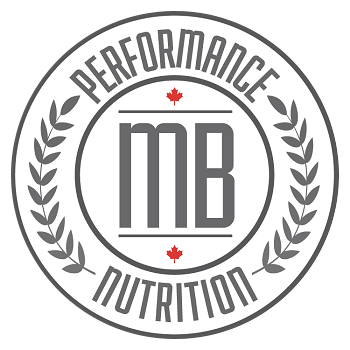Last updated on January 11th, 2024
I bet you hear a lot about omega-3s – and for good reason! Not only is one of them essential for good health, but we don’t get enough of them in our diets.
Omega-3s are a kind of fat. Different fats are used by our bodies for different essential functions.
They’re part of the membranes that surround each cell and are especially important in the brain and nerves. They can mediate the effect of our immune cells as well as influence the production of neurotransmitters and hormones.
Omega-3s are anti-inflammatory and have benefits for the heart, brain, and mental health.
What Are Omega-3s?
There are several types of fats (a.k.a. fatty acids). They’re broken down into two main categories: saturated and unsaturated. Unsaturated fatty acids are further broken down into monounsaturated (MUFAs) and polyunsaturated (PUFAs).
The main types of PUFAs are omega-3s and omega-6s.
You don’t hear much about omega-6s because we tend to get too much of these in our diet already.
Omega-6s are found in meat, poultry, and many common seed oils like corn and sunflower. So, the focus has been to educate people to swap out some of those omega-6s to get more omega-3s as our ancestors did.
Three of the omega-3 fatty acids are particularly important for health. They are:
- Alpha-linolenic acid (ALA) – essential fatty acid
- Eicosapentaenoic acid (EPA) – biologically active fatty acid
- Docosahexaenoic acid (DHA) – biologically active fatty acid
ALA is essential for health, just like essential vitamins and minerals. This is because the body can’t create it from other nutrients.
It is this omega-3 that the body needs in order to create the biologically active EPA and DHA. In fact, research shows that the primary role of ALA is to be the building block for EPA and DHA.
What I mean by “biologically active” is that EPA and DHA are the forms of omega-3s that provide the health benefits. They’re the ones that are active in the body.
ALA is the plant-based omega-3 and is found in many seeds like flax, hemp, and chia. It’s also found in walnuts, and oils from olives, canola, and soy.
EPA and DHA, on the other hand, are found in seafood, especially oily fish. They are also found in algae, which is a vegetarian source.
FUN FACT: Fish have the biologically active forms of omega-3s because they eat the algae and store extra EPA and DHA in their fat.
The conversion of plant-based essential ALA into the biologically active EPA and DHA is complex and requires several steps and enzymes. Unfortunately, the process isn’t very efficient.
The conversion rate of ALA to EPA is about 8-12%, while the conversion to DHA is only about 1%. Some studies show that women may have slightly higher conversion rates compared to men.
Despite all of this biochemistry, the real question is how do they work in the body and what are the health and performance benefits of omega-3s?
The Health Benefits of Omega-3s
There is a lot of research about the health benefits of omega-3 fatty acids. Things like anti-inflammation, heart and brain health, as well as better moods.
Omega-3s and Anti-Inflammation
Yes! What you eat can increase or decrease the amount of inflammation in your body.
An inflammatory diet contains a much higher intake of omega-6s compared with omega-3s. In fact, the higher the intake of certain omega-6s, the higher the production of certain inflammatory molecules.
Many animal and some clinical studies have found reduced inflammation when omega-3 supplements were taken.
A review of 30 studies showed that fish oil supplements reduced the pain of arthritis, particularly rheumatoid arthritis.
How Do Omega-3s Reduce Inflammation?
First, they are used to create anti-inflammatory molecules themselves. Second, they can inhibit some of the mechanisms that cause inflammation in the first place.
Omega-3s are used to produce certain anti-inflammatory molecules (e.g. prostaglandins, resolvins, etc.) that combat inflammation.
They also reduce the production of enzymes that create inflammatory molecules, and can even reduce the expression of certain inflammatory genes.
Omega-3s become incorporated into the membranes of immune cells and affect their inflammatory response.
The Performance Benefits of Omega-3s
When it comes to the performance benefits of omega-3s, evidence on humans is either lacking or it hasn’t shown a significant benefit.
Because there aren’t any specific benefits to muscle gain and exercise performance yet, omega-3 supplements are not considered a core supplement for athletes.
The key benefit of omega-3s for athletes would be their ability to battle inflammation. They also support good blood flow and heart health.
New evidence is emerging that omega-3s can help improve concussion recovery.
For athletes looking to gain a competitive edge to improve their performance, dialing in their nutrition certainly helps.
There are definite health benefits to increasing omega-3s in the diet and decreasing omega-6s in the diet that could lead to improved performance.
When it comes to claims that supplementing with fish oil can improve muscle soreness, one human study suggests a decrease while most evidence suggests no significant influence.
In this double blind trial 1.8g Fish Oil (with 100IU vitamin E) for 30 days was ineffective in treatment of Delayed onset muscle soreness (DOMS).
In this double blind trial 1.8g of fish oil was effective in reducing perception of pain and soreness over 27 days of supplementation.
In yet another double blind trial, high dose fish oil (2224mg EPA, 2208mg DHA) was ineffective in reducing the perception of soreness, but was effective in reducing inflammatory biomarkers, in a sample of 14 otherwise untrained men during weighted aerobic training.
When it comes to human studies on joint pain, supplemental fish oil has been found to reduce pain in persons with inflammatory joint pain as assessed by patient reports and NSAID consumption, but not by physician reports.
While the science behind omega-3s in sports nutrition is lagging, the evidence that is emerging is exciting and promising.
How to Get Enough Omega-3s From Food
In order to get the health benefits, you have to regularly eat enough foods that are high in omega-3s.
It’s thought that our ancestral diets included approximately equal amounts of omega-3s and omega-6s.
Now, our intake of omega-6s is up to 20x higher than our intake of omega-3s. This is why there is such an emphasis on getting enough omega-3s.
When it comes to plant-based sources of omega-3s, flax is the winner! Up to half of flax’s total fatty acids are the essential omega-3 ALA. Canola, walnuts, and soy, are less concentrated sources of ALA, with about 10% of their fatty acids as ALA.
To eat the recommended amount of omega-3s have at least two servings of fatty fish each week. Fatty fish include salmon, mackerel, herring, and sardines. This is a recommendation from the World Health Organization, as well as other health authorities.
In the US, there have been consistent recommendations to increase fish intake for almost 20 years. Despite this, the average American still only eats about 1.3 servings of fish per week.
Eating fish and seafood gives you a lot more nutrition than simply taking a supplement. They contain protein, vitamins D and B12, as well as the minerals iodine, selenium, potassium, and magnesium, to name a few.
When it comes to choosing fish, bigger is not better! Large fish that feed on smaller fish have higher concentrations of toxins in their fat. To reduce your intake of things like methyl mercury and organic pollutants, limit your intake of tilefish, king mackerel, shark, and swordfish. And anyone who is pregnant, breastfeeding, or a child, should avoid these types of fish altogether.
There are also non-fish sources of omega-3s! Some foods are fortified with omega-3 oils. Check your labels.
It’s recommended that most adults get at least 0.5-1.6 g per day of combined EPA and DHA, preferably from food. In terms of ALA, 1.5-3 g per day is beneficial, and that can be from plant-based foods or supplements.
The US Food and Drug Administration (FDA) tells us that up to 3 g of EPA and DHA a day is just fine. And the European food safety authority figures that up to 6 g of EPA and DHA a day is completely safe.
The more EPA and DHA is provided by the diet, the less supplementation is required.
For the record, an 8 oz piece of salmon contains about 3.75 grams of EPA+DHA.
Omega-3 Supplements
Fish oil is the most common non-vitamin and non-mineral supplement taken in the U.S., with consumers citing improved heart health as their main motivation for taking it.
For plant-based eaters or those allergic to fish, there are algae-based omega-3 supplements available now.
If you decide to supplement, make sure your fish oil is high quality.
Once you’ve opened your fish oil, keep it in the fridge and use it within 40 days. Longer than that and the chances of oxidation go up.
NOTE: Omega-3 supplements are by no means a “treatment,” but can help in cases of insufficiency. In terms of safety, fish oil supplements have a long history of safety. However, be cautious if you’re planning or recently had surgery, or have a compromised immune system. Speak with your physician or pharmacist if you take pain, anti-inflammatory, or blood-clotting, or blood lipid/cholesterol medications. Speak with your health care professional before changing your supplement regimen.
Conclusion
Omega-3 fatty acids are essential for good health!
Some of the health benefits include reduced inflammation and pain of rheumatoid arthritis; improved brain function and mental health; and reduced risk of heart disease.
Flax is the best plant-based source of the essential omega-3, ALA. The two biologically active omega-3s, EPA and DHA, are from fish or algae. It’s always recommended to get your nutrients from food as much as possible. At least two servings of fatty fish each week is recommended.
If you consider supplementing, make sure to follow directions on the label and keep them refrigerated. If you have any medical conditions or are taking medications, make sure to speak with your health care professional.
References:
Abdulrazaq M1, Innes JK1, Calder PC2.(2017). Effect of ω-3 polyunsaturated fatty acids on arthritic pain: A systematic review. Nutrition, 39-40:57-66. doi: 10.1016/j.nut.2016.12.003. LINK: https://www.ncbi.nlm.nih.gov/pubmed/28606571
Bäck, M. (2017). Omega-3 fatty acids in atherosclerosis and coronary artery disease. Future Science OA, 3(4), FSO236. http://doi.org/10.4155/fsoa-2017-0067 LINK: https://www.ncbi.nlm.nih.gov/pmc/articles/PMC5674268/
Baker, E.J., Miles, E.A., Burdge, G.C., Yaqoob, P. & Calder, P.C. (2016). Metabolism and functional effects of plant-derived omega-3 fatty acids in humans. Prog Lipid Res, 64:30-56. doi: 10.1016/j.plipres.2016.07.002. LINK: https://www.ncbi.nlm.nih.gov/pubmed/27496755
Balk, E. M., & Lichtenstein, A. H. (2017). Omega-3 Fatty Acids and Cardiovascular Disease: Summary of the 2016 Agency of Healthcare Research and Quality Evidence Review. Nutrients, 9(8), 865. http://doi.org/10.3390/nu9080865 LINK: https://www.ncbi.nlm.nih.gov/pmc/articles/PMC5579658/
Bègue, L., Zaalberg, A., Shankland, R., Duke, A., Jacquet, J., Kaliman, P., Pennel, L., Chanove, M., Arvers, P. & Bushman, B.J. (2017). Omega-3 supplements reduce self-reported physical aggression in healthy adults. Psychiatry Res, 261:307-311. doi: 10.1016/j.psychres.2017.12.038. LINK: https://www.ncbi.nlm.nih.gov/pubmed/29331711
Bowen K.J., Harris, W.S. & Kris-Etherton, P.M. (2016). Omega-3 Fatty Acids and Cardiovascular Disease: Are There Benefits? Curr Treat Options Cardiovasc Med, (11):69. LINK: https://www.ncbi.nlm.nih.gov/pmc/articles/PMC5067287/
Burckhardt, M., Herke, M., Wustmann, T., Watzke, S., Langer, G. & Fink A. (2016). Omega-3 fatty acids for the treatment of dementia. Cochrane Database Syst Rev, 11;4:CD009002. doi: 10.1002/14651858.CD009002.pub3. LINK: https://www.ncbi.nlm.nih.gov/pubmed/27063583 LINK: http://onlinelibrary.wiley.com/doi/10.1002/14651858.CD009002.pub3/pdf
Calder, P. C. (2013). Omega‐3 polyunsaturated fatty acids and inflammatory processes: nutrition or pharmacology? British Journal of Clinical Pharmacology, 75(3), 645–662. http://doi.org/10.1111/j.1365-2125.2012.04374.x LINK: https://www.ncbi.nlm.nih.gov/pmc/articles/PMC3575932/
Calder P.C. (2017). Omega-3 fatty acids and inflammatory processes: from molecules to man. Biochem Soc Trans, 15;45(5):1105-1115. doi: 10.1042/BST20160474. LINK: https://www.ncbi.nlm.nih.gov/pubmed/28900017
Carlson, S. E., & Colombo, J. (2016). Docosahexaenoic Acid and Arachidonic Acid Nutrition in Early Development. Advances in Pediatrics, 63(1), 453–471. http://doi.org/10.1016/j.yapd.2016.04.011 LINK: https://www.ncbi.nlm.nih.gov/pmc/articles/PMC5207030/
Chaddha, A & Eagle, K.A. (2015). Omega-3 Fatty Acids and Heart Health. Circulation, 132:e350-e352. https://doi.org/10.1161/CIRCULATIONAHA.114.015176 LINK: http://circ.ahajournals.org/content/132/22/e350.long
Coorey, R., Novinda, A., Williams, H. & Jayasena, V. (2015). Omega-3 fatty acid profile of eggs from laying hens fed diets supplemented with chia, fish oil, and flaxseed. J Food Sci, 80(1):S180-7. doi: 10.1111/1750-3841.12735. LINK: https://www.ncbi.nlm.nih.gov/pubmed/25557903
Gintya, A.T. & Conklinb, S.M. (2015). Short-term supplementation of acute long-chain omega-3 polyunsaturated fatty acids may alter depression status and decrease symptomology among young adults with depression: A preliminary randomized and placebo controlled trial. Psychiatry Research. 229(1–2); 485–489. LINK: http://www.sciencedirect.com/science/article/pii/S0165178115003844
Gioxari, A., Kaliora, A.C., Marantidou, F. & Panagiotakos, D.P. (2018). Intake of ω-3 polyunsaturated fatty acids in patients with rheumatoid arthritis: A systematic review and meta-analysis. Nutrition, 45:114-124.e4. doi: 10.1016/j.nut.2017.06.023. LINK: https://www.ncbi.nlm.nih.gov/pubmed/28965775 Health Canada, Natural and Nonprescription Health Products Directorate, Single Monographs, Fish Oil. Accessed March 2, 2018. LINK: http://webprod.hc-sc.gc.ca/nhpid-bdipsn/atReq.do?atid=fish.oil.huile.poisson&lang=eng
Jayarathne, S., Koboziev, I., Park, O.-H., Oldewage-Theron, W., Shen, C.-L., & Moustaid-Moussa, N. (2017). Anti-Inflammatory and Anti-Obesity Properties of Food Bioactive Components: Effects on Adipose Tissue. Preventive Nutrition and Food Science, 22(4), 251–262. http://doi.org/10.3746/pnf.2017.22.4.251 LINK: https://www.ncbi.nlm.nih.gov/pmc/articles/PMC5758087/
Langlois, K. & Ratnayake, W.M. (2015). Omega-3 Index of Canadian adults. Health Rep. 26(11):3-11. LINK: http://www.statcan.gc.ca/pub/82-003-x/2015011/article/14242-eng.pdf
Martínez-Cengotitabengoa, M. & González-Pinto, A. (2017). Nutritional supplements in depressive disorders. Actas Esp Psiquiatr, 45(Supplement):8-15. LINK: https://www.actaspsiquiatria.es/repositorio//suplements/19/ENG/19-ENG-947497.pdf
Molfino, A., Amabile, M. I., Monti, M., & Muscaritoli, M. (2017). Omega-3 Polyunsaturated Fatty Acids in Critical Illness: Anti-Inflammatory, Proresolving, or Both? Oxidative Medicine and Cellular Longevity, 2017, 5987082. http://doi.org/10.1155/2017/5987082 LINK: https://www.ncbi.nlm.nih.gov/pmc/articles/PMC5488236/
Mori TA1. (2017). Marine OMEGA-3 fatty acids in the prevention of cardiovascular disease. Fitoterapia, 123:51-58. doi: 10.1016/j.fitote.2017.09.015. LINK: https://www.ncbi.nlm.nih.gov/pubmed/28964873
Rapaport, M. H., Nierenberg, A. A., Schettler, P. J., Kinkead, B., Cardoos, A., Walker, R., & Mischoulon, D. (2016). Inflammation as a Predictive Biomarker for Response to Omega-3 Fatty Acids in Major Depressive Disorder: A Proof of Concept Study. Molecular Psychiatry, 21(1), 71–79. http://doi.org/10.1038/mp.2015.22 LINK: https://www.ncbi.nlm.nih.gov/pmc/articles/PMC4581883/
Rogers, L. K., Valentine, C. J., & Keim, S. A. (2013). DHA Supplementation: Current Implications in Pregnancy and Childhood. Pharmacological Research : The Official Journal of the Italian Pharmacological Society, 70(1), 13–19. http://doi.org/10.1016/j.phrs.2012.12.003 LINK: https://www.ncbi.nlm.nih.gov/pmc/articles/PMC3602397/
Rutkofsky, I.H., Khan, A.S., Sahito, S. & Kumar, V. (2017). The Psychoneuroimmunological Role of Omega-3 Polyunsaturated Fatty Acids in Major Depressive Disorder and Bipolar Disorder. Adv Mind Body Med, 31(3):8-16. LINK: https://www.ncbi.nlm.nih.gov/pubmed/28987035
Senftleber, N.K., Nielsen, S.M., Andersen, J.R., Bliddal, H., Tarp, S., Lauritzen, L., Furst, D.E., Suarez-Almazor, M.E., Lyddiatt, A. & Christensen, R. (2017). Marine Oil Supplements for Arthritis Pain: A Systematic Review and Meta-Analysis of Randomized Trials. Nutrients, 9(1). pii: E42. doi: 10.3390/nu9010042. LINK: https://www.ncbi.nlm.nih.gov/pmc/articles/PMC5295086/
Siscovick, D.S., Barringer, T.A., Fretts, A.M., Wu, J.H., Lichtenstein, A.H., Costello, R.B., Kris-Etherton, P.M., Jacobson, T.A., Engler, M.B., Alger, H.M., Appel, L.J. & Mozaffarian, D. (2017). Omega-3 Polyunsaturated Fatty Acid (Fish Oil) Supplementation and the Prevention of Clinical Cardiovascular Disease: A Science Advisory From the American Heart Association. Circulation, 135(15):e867-e884. doi: 10.1161/CIR.0000000000000482. LINK: http://circ.ahajournals.org/content/circulationaha/135/15/e867.full.pdf
Watanabe, Y. & Tatsuno, I. (2017). Omega-3 polyunsaturated fatty acids for cardiovascular diseases: present, past and future. Expert Rev Clin Pharmacol, 10(8):865-873. doi: 10.1080/17512433.2017.1333902. LINK: https://www.ncbi.nlm.nih.gov/pubmed/28531360
Whittington, R. A., Planel, E., & Terrando, N. (2017). Impaired Resolution of Inflammation in Alzheimer’s Disease: A Review. Frontiers in Immunology, 8, 1464. http://doi.org/10.3389/fimmu.2017.01464 LINK: https://www.ncbi.nlm.nih.gov/pmc/articles/PMC5681480/
Zárate, R., el Jaber-Vazdekis, N., Tejera, N., Pérez, J. A., & Rodríguez, C. (2017). Significance of long chain polyunsaturated fatty acids in human health. Clinical and Translational Medicine, 6, 25. http://doi.org/10.1186/s40169-017-0153-6 LINK: https://www.ncbi.nlm.nih.gov/pmc/articles/PMC5532176/
https://www.nutraingredients-usa.com/Article/2018/06/19/Omega-3-in-sports-nutrition-Science-is-exciting-and-promising-but-still-emerging
https://pubmed.ncbi.nlm.nih.gov/12370562/
https://examine.com/supplements/fish-oil/
https://www.precisionnutrition.com/fish-oil-dangerous


